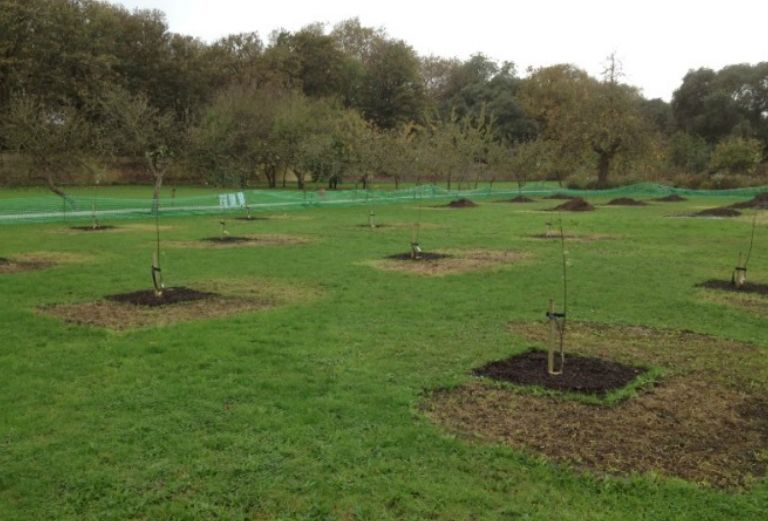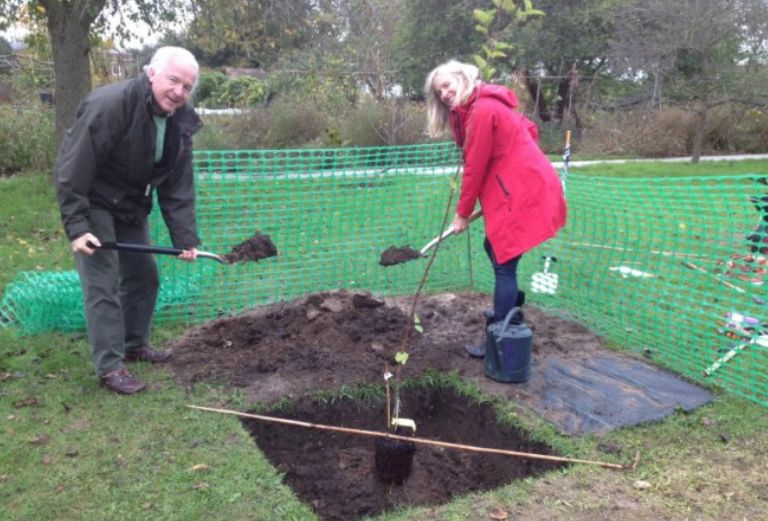
by Lucy Hart, head gardener
To reflect the historic orchards at Fulham Palace that were grown on the north and south side of the Palace grounds, an apple orchard is being planted in the north east quadrant of the Walled Garden. The new orchard has an orthogonal layout which reflects the historical layout of the Walled Garden and allows good circulation for the public. Forty-seven apple trees are being planted and arranged by an overriding transatlantic apple theme. North America has no native domestic apples, and so we are celebrating Fulham Palace’s North American botanical links by growing apples that were sent over to America from England in the mid 17th century.
- Two quadrants will contain transatlantic varieties, those which were grown in England and Europe and sent to North America from the mid 1600s. There are twenty-three trees of different varieties across these two quadrants (with one deducted due to the location of the bee hives).
- One quadrant will contain varieties recommended by George London and Henry Wise. George London was Head Gardener at Fulham Palace to Bishop Compton in the late 1600s, and most of these varieties were sent over to America.
- The final quadrant will have two themes: six varieties of apples that once growing in America were bred there and then later sent back to England, and six apple trees that we know the Bishop grew here in the 1860s and 1870s.
As part of the research into choosing which varieties to have at Fulham Palace, I had the honour of reading original historic publications by leading apple authorities. I visited the Lindley Library in London, which is the Royal Horticultural Society’s largest library, and the librarians were incredibly helpful. I looked at Gerard’s Herbal 1520, Parkinson’s Paradisi in Sole Paradisus Terrestris 1629, Batty Langley’s Pomona 1729, George London and Henry Wise’s The retired gardener 1706 and Stephen Switzer’s The Practical Fruit Gardener 1723.
While the apples were chosen by theme, other important factors where also considered when selecting the varieties. Time of flowering and therefore pollination group – there needed to be at least one other variety in the same group so they can pollinate each other. Of course the type of apple – dessert, cooking or cider. Then aesthetically the colour of the apple and the colour and attractiveness of the blossom. This then with availability, the final list was made.
On the MM106 rootstock the trees should be producing apples within the next three to four years, and so now we water, prune, train and wait, and hope we get there before the parakeets do!
The orchard and archaeological dig was funded by Gordon and Paula Edington. Gordon is the Property Trustee and Deputy Chairman of Fulham Palace. We are very grateful for their generosity.
